A step-by-step blueprint for taking a new physical therapy clinic from an empty schedule to a thriving, waitlisted practice in under 12 months.
In late 2018, Eric Steinke was referred to us by a long-standing client here in Waco, Texas. He was essentially starting a physical therapy clinic from scratch – a true startup. In fact, when we met him, he hadn’t even opened his doors yet. We typically don’t work with startups (most have no realistic plan for success), but Eric was different. It became obvious that he’s the kind of guy who carefully plans everything he does and then meticulously follows through to work his plan. Even so, taking him on as a client was a huge risk for us, because his plan depended on obtaining a TON of new patients quickly – and filling that hole in his plan was exactly what he was counting on us for.
Gulp. No pressure, right?
Eric was asking us to take on one of the biggest challenges we’d ever faced. He planned to immediately relocate his young family to a new city – the highly competitive Dallas, TX market – to start his own sports physical therapy clinic. He had a mountain of college debt, a brand new SBA loan to fund the business, and a very limited runway to start making enough money to survive. Twelve months was the runway provided by his SBA loan and, with all the investments he’d need to make in equipment and infrastructure, even that time frame wasn’t assured for success.
...no website, no physical clinic (yet), no equipment, no clients, and no marketing or business experience.
He had the credentials: Eric completed his doctoral education at Texas Tech University Health Science Center, taken numerous sport-specific courses, and worked in orthopedic and sports therapy settings in Fort Worth, Houston, and Waco. In other words, he had the clinical expertise to open a sports physical therapy practice. But the fact remained that when we started he had no website, no physical clinic (yet), no equipment, no clients, and no marketing or business experience. If his clinic was going to thrive, marketing – and especially online marketing – would need to deliver results, fast.
Fast forward one year: Eric’s clinic was thriving. His schedule filled up with new patients, and his clinic’s revenue doubled his (quite aggressive) SBA loan projections in the first 12 months.
In fact, his success was so great that just five years later (2024) he had expanded his clinic to six full-time licensed therapists and opened a second location in the Dallas area to keep up with demand. How did he do it? In the rest of this case study, I’m going to share exactly how we helped Eric achieve these results – and how you could follow the same blueprint to attract your ideal patients and dramatically grow your clinic. This isn’t theoretical fluff; it’s a step-by-step story of what we did, why we did it, and how it worked. (And if you find yourself thinking “Wow, I’d love those results but I’d rather have expert help,” stick around – I’ll also explain how you can get a free website evaluation at the end.)
Let’s dive into the steps we took to go from zero to a fully booked, projected revenue-doubling practice in one year.
First, the basics. Eric needed a domain name for his website – ideally one that matched his clinic’s brand name. We’ve found that a branded domain name (such as his brand name itself) will, over time, garner more respect and trust from Google than a cutesy domain that just stuffs in a keyword. Eric had chosen the name “Precision Sports Physical Therapy” for his clinic. We searched for an available domain and were able to grab PrecisionSports.net, the .NET version of his brand name. (Why .NET? The .com was taken, and .NET is a perfectly fine choice for a professional site, especially when it matches the brand.) We used our preferred registrar to secure it – one that offers free privacy protection and doesn’t nickel-and-dime customers with unnecessary add-ons. Domain: check. It might seem like a small step, but choosing a solid, brand-aligned domain set the foundation for everything to come.
If you’re launching a clinic website, choose a domain name that matches your brand and is easy to remember. Avoid quirky SEO-stuffed names like “BestDallasTherapy123.com.” Google and patients alike prefer a real brand. And be sure to use a reputable domain registrar (one that offers privacy protection to keep your contact info from getting spammed). It’s a simple thing, but it starts your online presence off on the right foot.

Don't build a website and hope people find it. Research exactly what your potential patients are searching for, then build content around those specific searches. Data beats guesswork every time.
With the domain secured, we moved on to figuring out which searches (keywords) we needed Eric’s new website to show up for in Google. This step was absolutely critical: targeting the right keywords would make the difference between the phone ringing off the hook with ideal patients versus crickets or the wrong kinds of inquiries. We kicked off this research by doing a deep dive into understanding Eric’s business model and his ideal patient profile.
It turned out Eric wasn’t interested in being a general “anything and everything” physical therapy clinic. His passion (and specialty) was sports physical therapy – working with athletes and active individuals recovering from sports-related injuries. That focus was great news for our SEO strategy. By zeroing in on a niche within physical therapy, we could dramatically narrow down the competition. Why try to rank for broad terms like “physical therapy Dallas” (dominated by huge hospital systems and corporate clinics) when we could target more specific, high-intent terms that those big players were overlooking?
We spent several hours with Eric discussing exactly which types of athletes and injuries he most wanted to handle. These conversations were crucial: they helped us enumerate the precise “pain points” (no pun intended) his future patients would be searching for. If we attracted a bunch of general physical therapy inquiries that weren’t a fit for his sports expertise, it wouldn’t do him much good. So, we got specific: not just “sports physical therapy”, but also terms for particular injuries (ACL tears, rotator cuff injury rehab, Achilles tendonitis treatment, etc.), and terms for specific athlete groups (e.g., “physical therapy for runners” or “sports rehab for baseball pitchers”).
Focusing narrowly on these keywords was a key to generating results quickly. Why? Because while Dallas is a HUGE and insanely competitive market, these niche terms had solid search volume but relatively little competition. The big healthcare providers weren’t aggressively targeting “ACL rehab Dallas” – but we would. By specializing, Eric could become the big fish in a profitable little pond. There were enough people searching these niche terms to build a business on, and because those terms are very specific, the people searching them are more likely to convert into actual patients (they have a specific problem and are actively seeking the solution Eric offers).
Another factor we paid close attention to was keyword value. Google’s free tools (and our SEO software) can estimate what a click on a given search term is “worth” based on how much advertisers pay for it (Cost Per Click or CPC). This is basically the market telling us which searches are most valuable. If we found two similar keywords, and one had an average CPC of $1.50 while the other was $25.00, you can bet we prioritized the latter. For example, perhaps “Dallas sports therapist” might be worth far more per click than “Dallas physical therapy clinic.” We wanted to target the terms most likely to bring business. Higher CPC often correlates with searches that lead to revenue.
Our keyword research process was exhaustive – we analyzed over 60,000 potential keyword variations that might relate to Eric’s services and location. Through a grueling (but rewarding) process of elimination and analysis, we narrowed it down to the top 125 keyword phrases that perfectly matched his ideal services, had strong search demand, and high monetary value. We got this entire keyword study done within the first 72 hours of the project, working closely with Eric to make sure our choices aligned with his vision. Now, we had our roadmap of exactly what terms our content and SEO efforts needed to focus on.
(Imagine knowing exactly what your potential patients are typing into Google – and which of those searches are most likely to bring you business. That’s what targeted keyword research delivers. It’s the compass for everything that follows.)
Armed with our list of golden keywords, the next step was competitor analysis. We needed to know: who in the Dallas area was already dominating Google for these searches, and what were they doing to rank so well? You can’t enter a new market flying blind. We treated competitor research like reconnaissance before a big game – studying the competition’s playbook to find gaps we could exploit.
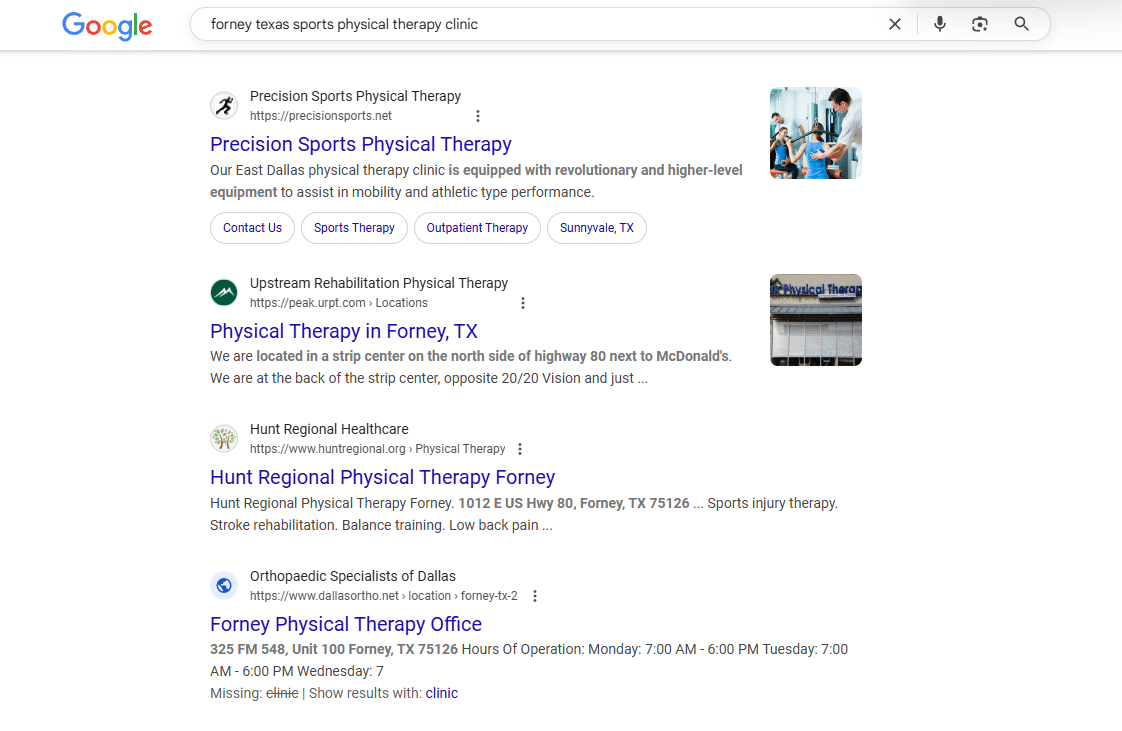
For each of Eric’s top search terms, we looked at who ranked in the top 3 organic positions on Google. These were often the established local clinics or larger healthcare providers. We then dug into each of those competitor websites and their relevant pages. Our analysis aimed to answer several key questions:
Identify your top online competitors for your target keywords. Analyze their strengths and weaknesses (content, SEO, backlinks) and create a plan to be better in every single category. Don't just compete; aim to dominate.
Whatever the answers were to these questions, our plan was simple: Eric’s site needed to outshine his competitors in every one of these areas. If a competitor had a decent amount of content, we’d aim for excellent, comprehensive content. If they had 10 good backlinks, we’d work to eventually have 20 great backlinks. If their site was a bit clunky on mobile, we’d ensure Eric’s was seamless. This competitor intel formed the backbone of our strategy moving forward. It showed us the bar we needed to clear to become the new #1 in the niche. And frankly, it also gave us confidence – we saw that even the “big guys” had weaknesses we could capitalize on.
At this point, we had our strategy mapped out on paper: the right keywords and a game plan to beat the competition. But in practice, we couldn’t implement a lot of it until the website existed. Eric still had no actual site up, and we needed to change that fast. While our team would normally take several months to build a full, optimized multi-page website, Eric didn’t have that kind of time. There were a few reasons we needed to get at least a basic web presence live ASAP:
So, we set out to create a temporary one-page website for Precision Sports Physical Therapy, and to do it quickly. We got this placeholder site up within the first two weeks of the campaign. Now, even though we called it “temporary,” we were very careful about what we put on this page. We knew that whatever content we put there would ideally remain in use (somewhere on the new site) later – we didn’t want to publish one thing and then replace it entirely later, because that can confuse Google or even be seen as bait-and-switch.
Don’t wait for the “perfect” full website if you’re starting from zero. Get a placeholder site up quickly that establishes your presence and credibility. You can always expand it, but at least you’ll have something for Google to index, for patients to find, and for use in your other marketing (like Google Maps, directories, etc.). Just make sure the content on it is something you’ll be able to keep using (so you don’t lose any SEO momentum you gain).
We decided the safest bet was to make this one-pager essentially an “About Us” style landing page for the clinic. It introduced Eric and his services, and importantly, it spoke to the core of his main service offerings (sports injury rehab, etc.) and incorporated some of the most important keywords from our research. We wrote it almost like a mini-homepage: it explained who Eric is, what Precision Sports PT is all about, and which patients they help. Later, when the full site was ready, this content could be reused on the official About Us page without any loss – in fact, that’s exactly what we did.
We didn’t fuss over design too much at this stage – a clean layout, a temporary logo (which our designer whipped up quickly just so the site looked professional), and very clear contact info. We made sure Eric’s new business phone number and address were prominently displayed. This would be important for the upcoming GBP verification and also immediately gave visitors a way to contact the clinic. We also added a simple contact form for good measure.
One more technical but important detail: we added the proper Local Business Schema markup to this page. That’s a bit of code in the site’s HTML that basically spoon-feeds Google key info about the business (name, address, phone, services, geo-coordinates, etc.). This would further confirm to search engines that Precision Sports Physical Therapy is a real business located in a specific place, which can aid in local search rankings.
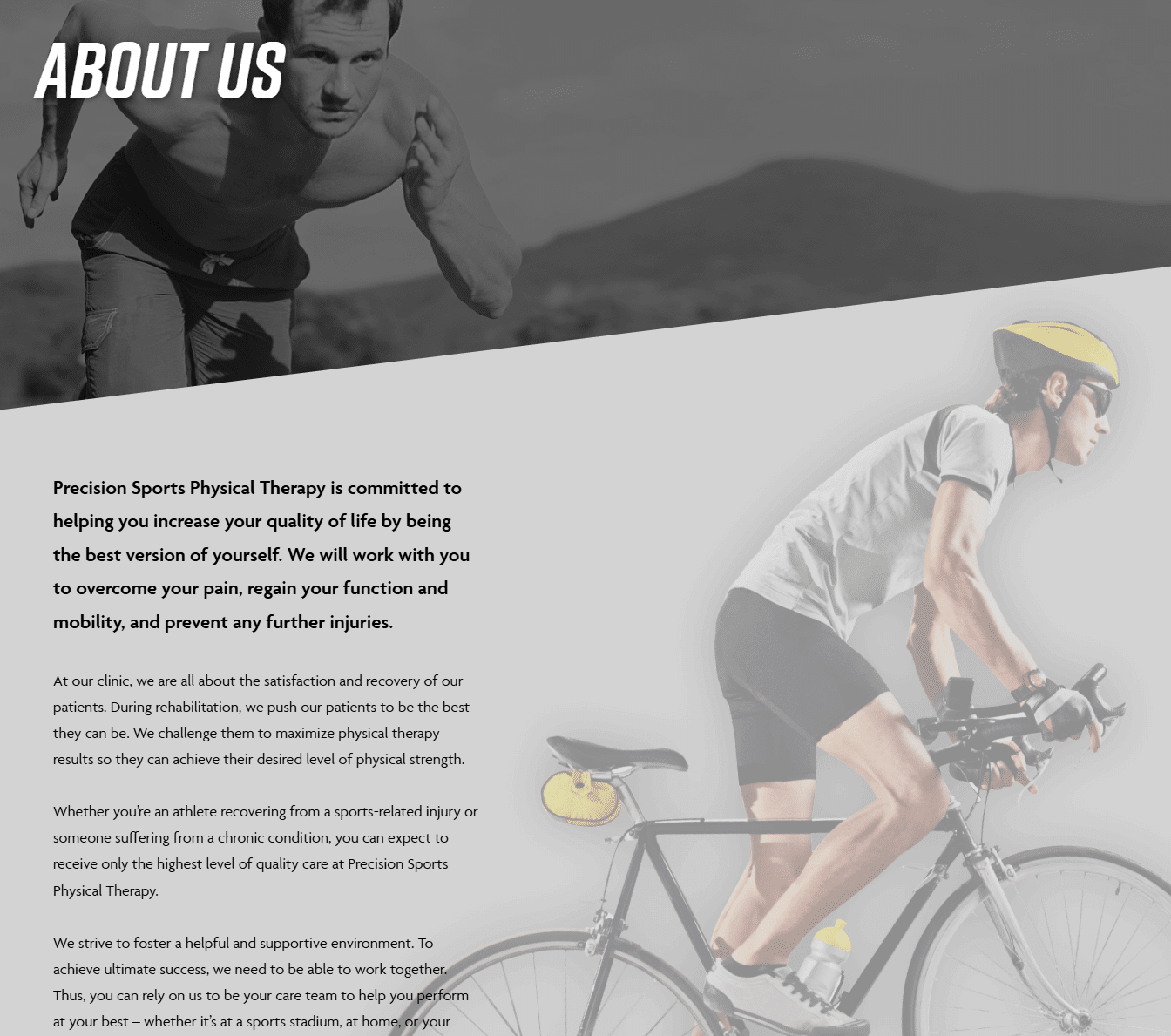
In summary, within two weeks, we went from no site at all to a functional one-page website that told Eric’s story, highlighted his specialty, and provided all the basic info a potential patient (or Google) would need. It wasn’t fancy, but it was optimized and purposeful. Now we had a foundation to build on.
With a website (even a simple one) now live, the next mission was to get Precision Sports Physical Therapy listed on Google Maps via a Google Business Profile. For any local business (especially something like a clinic where patients will be searching “physical therapist near me”), a Google Business Profile (GBP) is absolutely indispensable. This is what powers the Google Maps results and the local 3-pack that appears for local searches.
We went to business.google.com to register Eric’s new clinic. To do this right, we needed to input exact, consistent information: the business name (exactly as it’s officially known), the address of the clinic, the main phone number, and the website URL. Because we had our ducks in a row (and had just put that info on the website and schema markup), we were ready.
Google requires verification for new business listings. At the time, the method was to mail a postcard with a secret code to the business address. (Today, Google has gotten stricter; often they want a video call showing the premises, etc., but luckily Eric didn’t have to do that for his first location). We requested the postcard verification. While we waited about 5-7 days for that to arrive, we filled out as much of the profile as we could: business category (Physical Therapist), business hours, etc.
When the postcard arrived, Eric texted us a photo of it with the code. We plugged that into Google, and voila – his GBP was verified. Now Precision Sports Physical Therapy was officially on Google Maps and could start showing up in local search results. But a verification alone is not enough; we needed to optimize the heck out of this profile to make it a magnet for the right searches.
Your Google Business Profile is one of your most powerful local marketing tools. Claim it, verify it, and then meticulously optimize every single section with keywords, services, and photos.
We wrote a compelling business description for the profile, weaving in some of those target keywords in a natural way (e.g. “sports injury rehabilitation,” “athletic physical therapy in Dallas,” etc.). We also made sure to fill out every relevant service in the profile’s services section, again using our keyword list to name those services. For example, we added services like “ACL Tear Rehabilitation,” “Post-Operative Sports Therapy,” “Concussion Therapy,” and so on – all actual services Eric provides and phrases people search for.
Additionally, Eric helped us by taking photos of his clinic (both interior and exterior) and some action shots of him working with a patient (or a staged scenario). We uploaded all these to the Google Business listing. This is a step many overlook, but it’s surprisingly powerful: listings with lots of photos tend to get more engagement, and patients see that the place looks legit and welcoming. Especially for a new clinic, having, say, 20+ photos up – of the treatment rooms, the equipment, the smiling therapist (Eric) – builds trust with prospective patients who find you on Google. We’ve seen time and again that a well-optimized GBP with photos can be the difference in someone choosing your clinic over a competitor’s.

Within a couple of weeks of being verified and fleshing out the profile, Eric’s clinic started to appear in local search results, and the phone actually started to ring from it. (People were literally Googling for the services we listed and finding Precision Sports PT on the map pack.) We kept an eye on the GBP insights too, which told us how many times it showed up in searches and how many people called or visited the site from it. Those numbers were small at first – as expected for a brand new business – but they were growing steadily. We were on the map, both figuratively and literally.
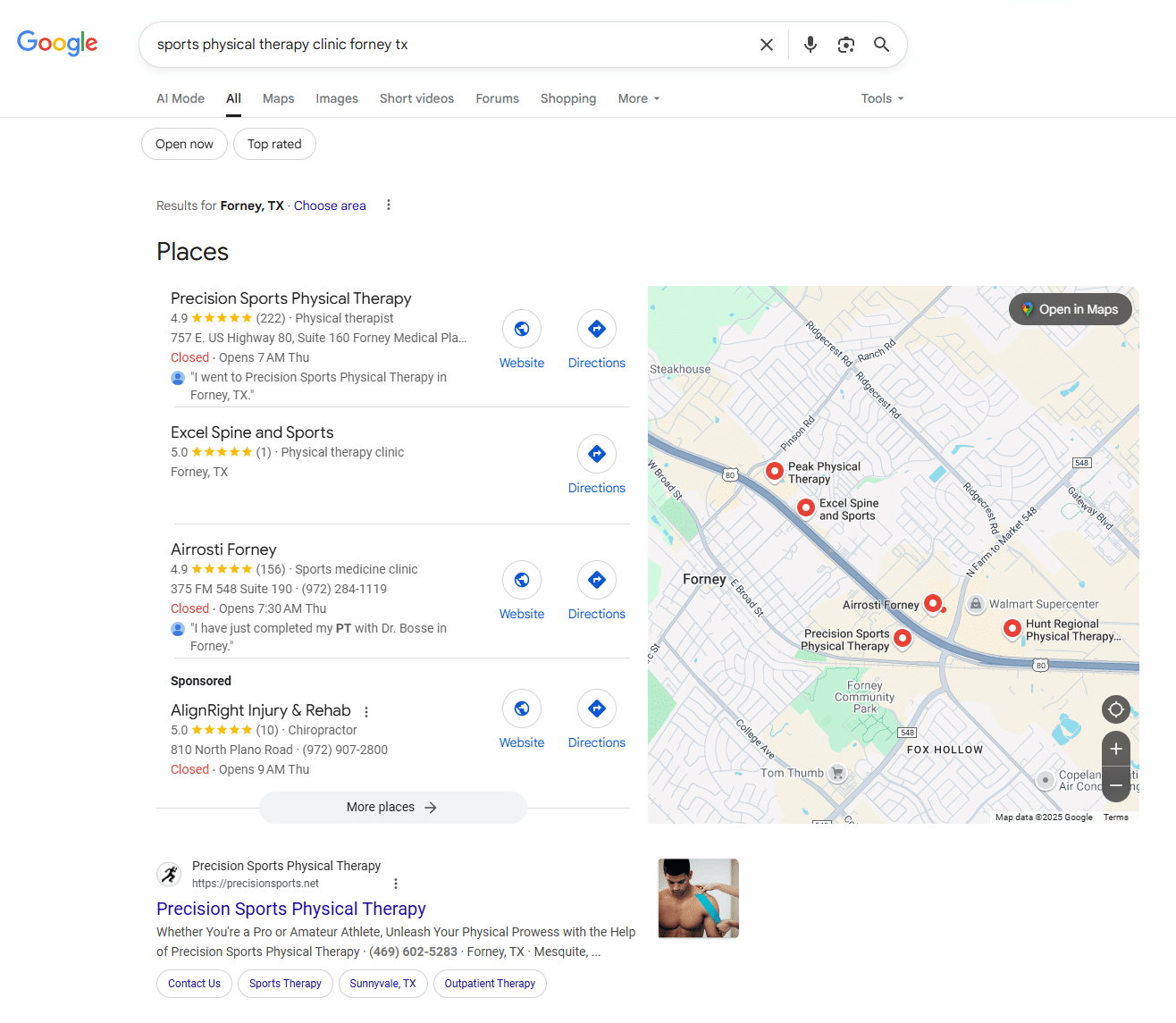




Now that Google recognized the business, we needed the rest of the internet to do so as well. In local SEO, one of the major factors for boosting your credibility (in Google’s eyes) is something called citations. A citation is basically any mention of your business on another website that usually includes your Name, Address, Phone number (NAP), and often your website link. Think of sites like Yelp, Yellow Pages, healthgrades.com, etc. – anywhere a business might be listed.
Why do these matter? Because when dozens of reputable directories and platforms all consistently list Precision Sports Physical Therapy, Dallas address, phone, website, it sends a big green signal to Google that “Hey, this business is real and established.” It reinforces the association of the business with the location and category. Plus, some patients do find businesses through these directories too, so there’s a direct benefit beyond Google.
We systematically got Eric’s business listed on 50+ relevant directories and citation sites. Consistency was key: we made absolutely sure that every listing had the exact same NAP info as Google and the website. (Nothing will confuse Google more than if one site calls it “Precision Sport PT” and another “Precision Sports Physical Therapy, LLC” or one has an old address, etc.) Consistency = trust.
Build consistent citations across relevant online directories. This reinforces your location and contact information to Google, building trust and local authority.
Some of the citation listings we tackled included:
There are services like Yext and others that can auto-sync your info to a bunch of sites for a fee, but we prefer doing this manually for quality control. (Those services sometimes lock you in or can override manual changes; plus, once you’re listed somewhere correctly, you typically don’t need to pay an ongoing fee – it stays up.)
The only time you’d need to update is if your info changes, like you move locations or change your phone number.
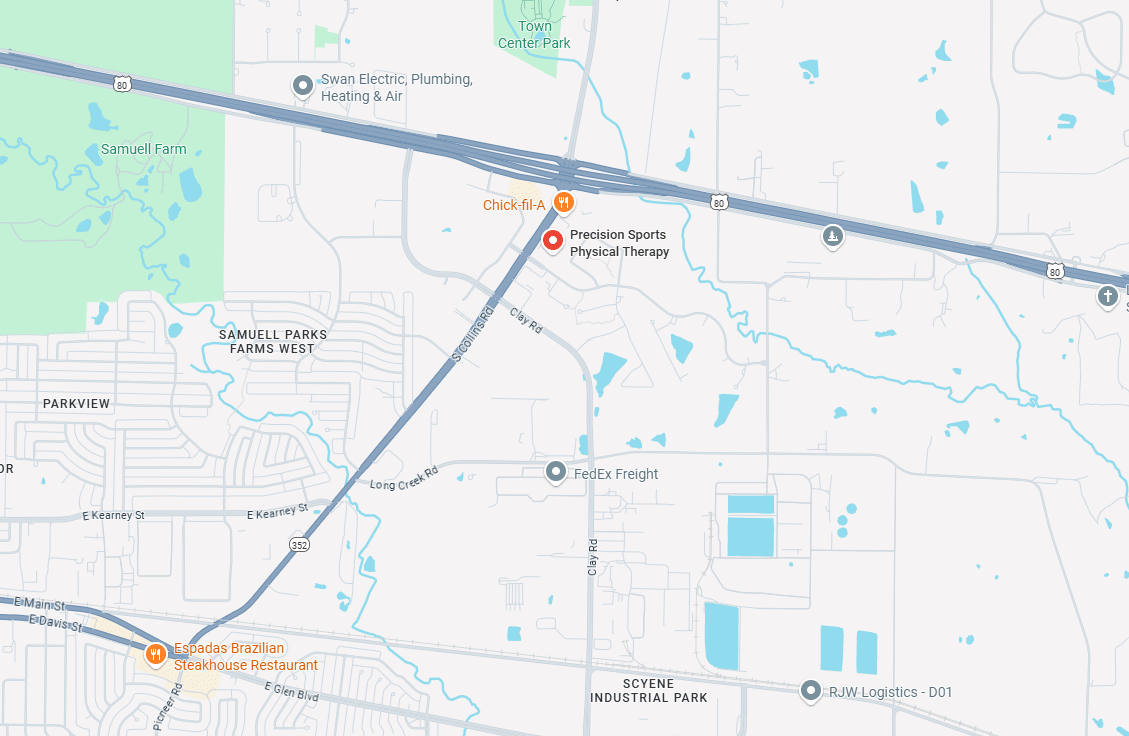
Within a month or so, if you searched for Precision Sports Physical Therapy, you’d see it popping up in all these different places. Each one was like another brick in the wall of Eric’s online presence. And behind the scenes, Google’s algorithms were taking note that everywhere they look, this new clinic is being talked about. This would strengthen his ability to rank in local searches beyond just the Google Business listing.
(If you’re thinking of replicating this: it’s not glamorous work to list your business in 50 directories, but it is absolutely worth it. It can be tedious, but every listing is like a vote of confidence for your clinic’s legitimacy. Just remember to keep your info 100% consistent across all of them.)
At this stage, the foundational pieces of Eric’s online presence were in place: website, Google listing, citations. Before we ramped up the more aggressive traffic-generation tactics, we wanted to make sure we could track the results of our efforts. After all, what good is a marketing campaign if you can’t tell where new patients are coming from?
We recommended and implemented a call tracking and analytics system called CallRail. Why? Because a lot of Eric’s conversions (new patient leads) were going to happen via phone calls (typical for a clinic). Sure, he’d likely get some website contact form submissions too, but many folks will just call to ask questions or book an appointment. We needed a way to attribute those calls to the marketing source that led the person to call.
CallRail allows us to set up unique tracking phone numbers that forward to the clinic’s real phone line. For example, we’d use one tracking number on the website, another in the Google Business Profile, others on various directory listings, etc. When a patient calls, they’re automatically forwarded to the clinic, so they never know anything fancy is happening. But on our end, CallRail logs which number was called and thus which source should get credit.
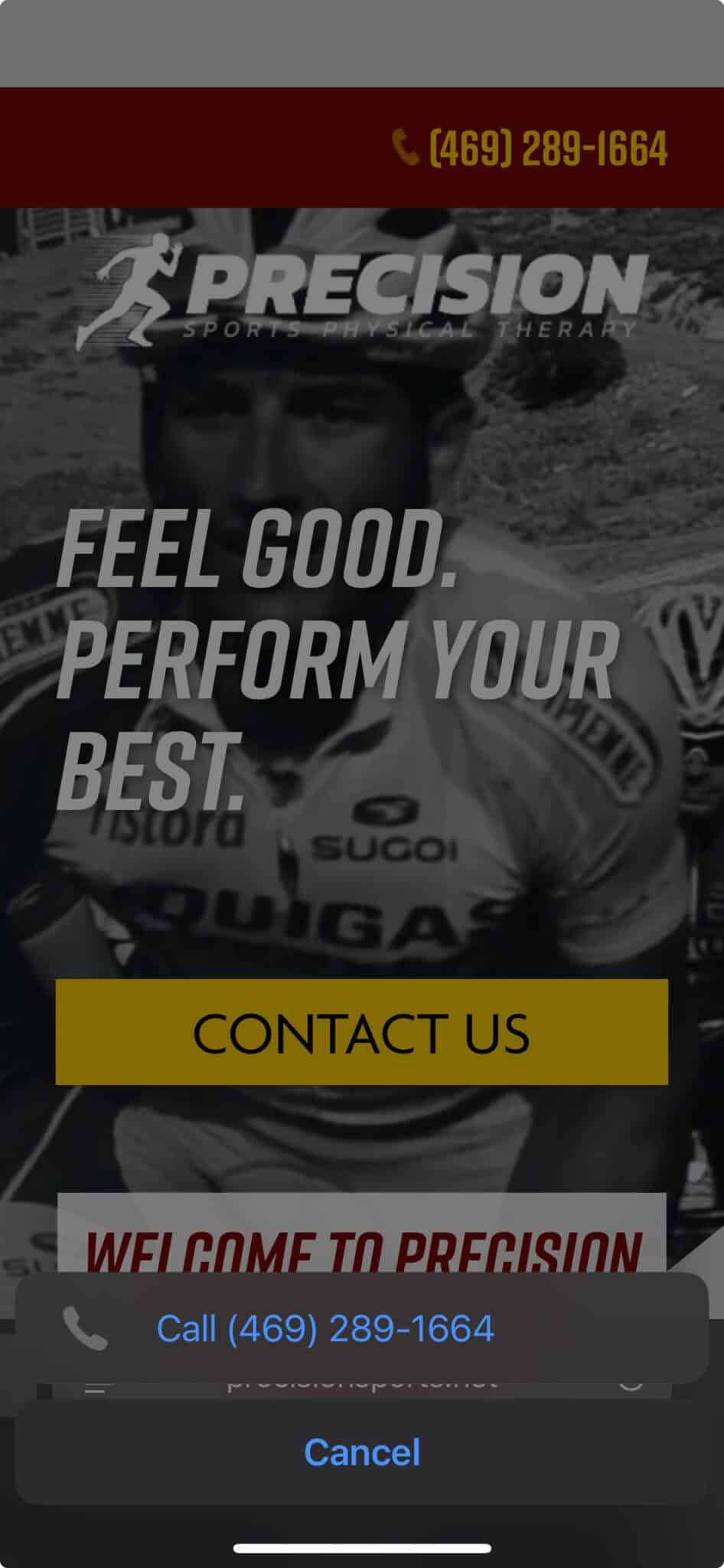
We set up a pool of tracking numbers for Eric’s website. This pool means if 5 people are on the site at the same time, each might see a different phone number (from our pool) displayed – and we can track each of those calls separately in real time. The pool was tied into Google Analytics too, so we could even see which page a caller was on when they picked up the phone to dial – super insightful to know if a lot of calls are coming from, say, the ACL injury page vs. the general contact page.




By putting in CallRail from the get-go, we set ourselves up to measure every step of growth. As the traffic and calls increased, we’d have the data at our fingertips to know what was working best. (It also helped us show Eric tangible proof of results – “Hey, you got 50 calls this month from SEO-related sources, up from 10 when we started” kind of stuff – which is always nice.)
Don’t fly blind. Use tracking tools (CallRail or similar) to measure where your leads are coming from. It might cost a bit extra, but if you’re investing in marketing, you should invest in knowing what part of that marketing is actually making you money. Plus, listening to your inbound calls can reveal gold nuggets on how to improve your sales/appointment-setting game.
We also assigned dedicated tracking numbers to major directories like Yelp and to the Google Business Profile. For instance, someone calling from the Google Maps listing would dial a number that’s unique to that listing. If/when that call came in, we’d see in CallRail that it was from GBP. Same for Yelp or others.
All these calls still rang through to Eric’s clinic seamlessly, but now we knew exactly where each caller found him. Over time, this would help us calculate ROI for each channel (SEO, Google Maps, referrals, etc.).



With the “engine” of the website built and our tracking in place, it was time to step on the gas in terms of driving more traffic – especially organic search traffic. Remember, in our keyword research and competitor analysis, we identified that backlinks (links from other websites to Eric’s site) would be a crucial factor in climbing the Google rankings. Nowhere is this more true than in a competitive metro area like Dallas. We couldn’t just build a great site and hope Google would bless us; we had to actively build authority.
So, we started our link outreach campaign in earnest. The strategy we used is often called guest posting or content outreach. In simple terms, we would identify reputable websites (ideally in the health, sports, or local business space) that might accept a contributed article, and within that article we’d include a natural, relevant link back to Precision Sports PT’s site.
However, we were extremely picky about where we tried to get these links. Quality mattered far more than quantity (especially for a new site – you don’t want spammy links that could do more harm than good). Our criteria for target sites included:
In competitive markets, don’t wait for backlinks to come to you – go out and earn them. But be strategic and patient: one link from a respected, relevant site beats 50 links from low-quality directories or blogs. And if your business is new, ramp up your link building slowly and naturally. Quality + consistency wins this race.
In the first few months, we started slowly. This is important: a brand-new domain getting a flood of links all at once can look unnatural to Google. Our plan was to secure no more than one backlink in each of the first four months, then add in another in the fifth month, and gradually ramp up over time. For roughly the first four months, we kept it to one link per month from a strong site. After that initial period (once the site had a bit more age and content), we increased the pace to about 2 new high-quality backlinks per month going forward.
So what kinds of articles did we end up placing? We wrote content that was genuinely useful and contextually related to what Eric does, but tailored to the audience of the target site. For example, on a general fitness blog, we might contribute an article like “Top 5 Tips to Prevent Common Sports Injuries During Marathon Training” – and within that article, perhaps when mentioning serious injuries, we’d cite an example and link the text “sports physical therapy for ACL injuries” back to Eric’s site (specifically, to his page about ACL rehab, once that page existed). The key is the link should be relevant and provide value, not just jammed in. Over time, we published guest content on a variety of sites: a running enthusiasts’ blog, a local sports news site, a health and wellness online magazine, etc. Each time, we earned a nice backlink.
This link building effort was paramount for boosting Eric’s Google rankings. Google’s algorithm largely treats a quality backlink like a vote of confidence in your site. The more “votes” (links) from reputable sources, the more Google assumes you must be an authority. Given Eric’s short timeline to start showing up in search, we couldn’t afford to be shy about proactively earning these links.
To find opportunities, we did things like search Google for terms like “write for us sports health” or use tools to find sites that had linked to other physical therapy clinics (if they linked to one, they might link to another).
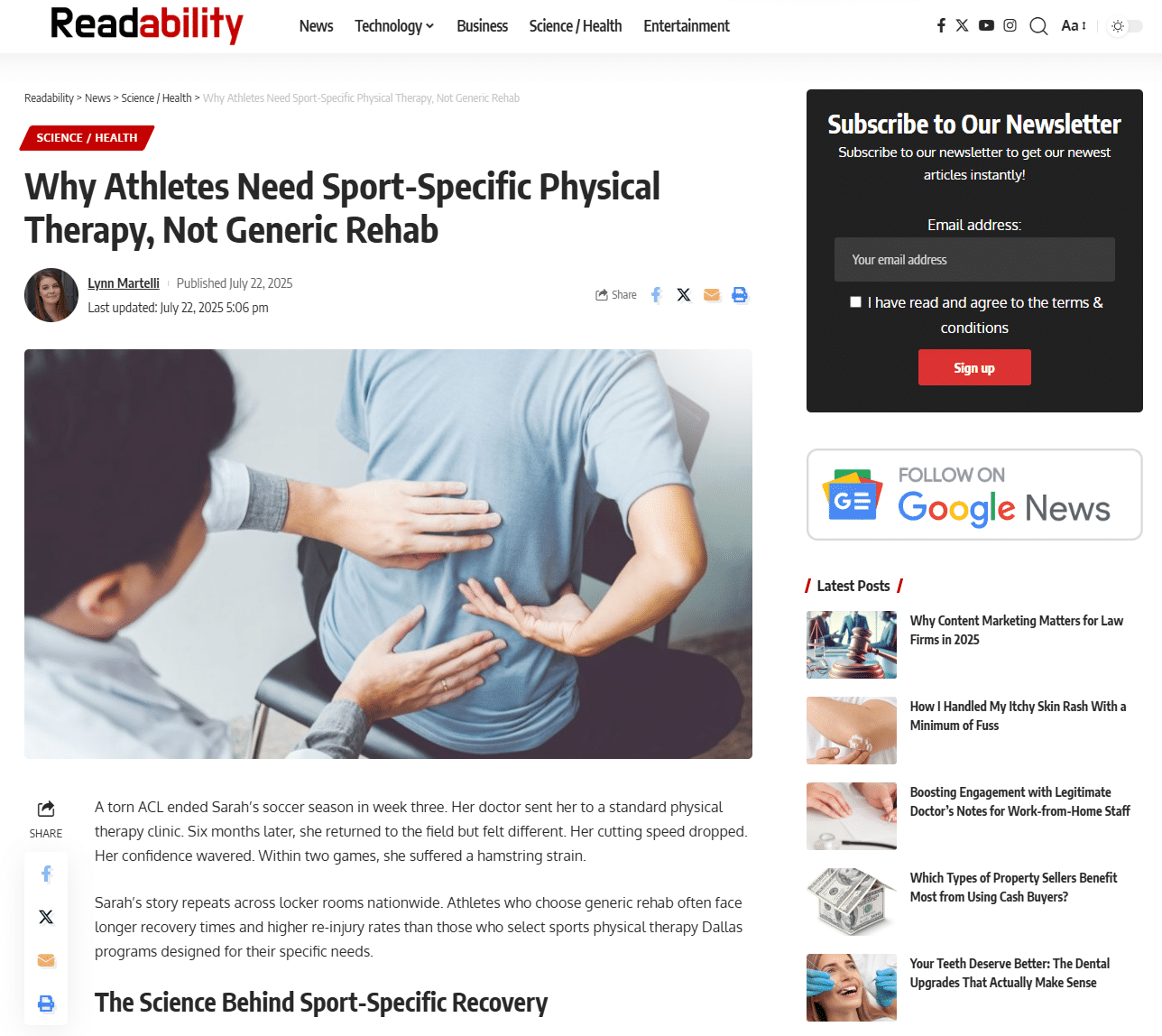
We reached out to hundreds of websites. Not everyone replied or said yes – that’s normal. But our team’s outreach persistence paid off. We set a goal each month and hit it consistently, finding those gems who were willing to publish our content (sometimes for a negotiated administrative fee, which we budgeted for) with our backlink included.
As the months went by, we could directly correlate certain jumps in Eric’s keyword rankings with the acquisition of a strong backlink. It’s a great feeling to see that cause-and-effect – it reinforced that our strategy was working. By month 6 or so, he had a handful of really powerful sites pointing to his domain, something none of his local competitors could boast. And we kept that momentum going throughout the year, building Eric’s site into an authority within its niche.
Meanwhile, as link building and other early efforts were underway, we were also working on the grand plan for Eric’s full website. Remember, at the start we launched a one-page site. That was never the end goal; the end goal was a robust website that would be the hub of all this organic traffic. So we needed to plan it out thoughtfully. We call this the Website Engineering Plan – essentially a master blueprint for the site’s structure, content, and on-page SEO strategy.
Using insights from our keyword research and competitor analysis, we mapped out exactly what pages the full site should have. This included all the standard pages (Home, About, Contact, etc.) and, crucially, a page for each major service or topic that we wanted to rank for. For example, we knew we’d want dedicated pages for things like Knee Injury Rehabilitation, Shoulder Physical Therapy, Back Pain Therapy, Sports Performance Training, and so on – based on the list of 125 keywords and the services Eric offers. Each of those pages would target a cluster of related keywords.
We structured the site in a logical way:
For internal linking and site navigation, we planned to make it easy for visitors (and Google) to find related content. For instance, the ACL Rehab service page might link to a blog post about “Recovery timeline after ACL surgery,” and vice versa. The website plan detailed these kinds of connections.
We also made sure the plan included all the little but important SEO elements: a schema markup plan (for local business, FAQ sections, etc.), where to put lead forms and calls to action on pages, and even technical notes like ensuring fast page load times. Essentially, we were engineering the site to be an SEO powerhouse from day one.
Think of this like an architect building a house: you wouldn’t start pouring concrete until you have blueprints. Our blueprint was now ready – pages outlined, keywords mapped, site structure defined. It was time to build the house.
Plan your website's structure strategically. Don't just add pages randomly. Create a logical hierarchy based on your keyword research to guide users and search engines effectively.
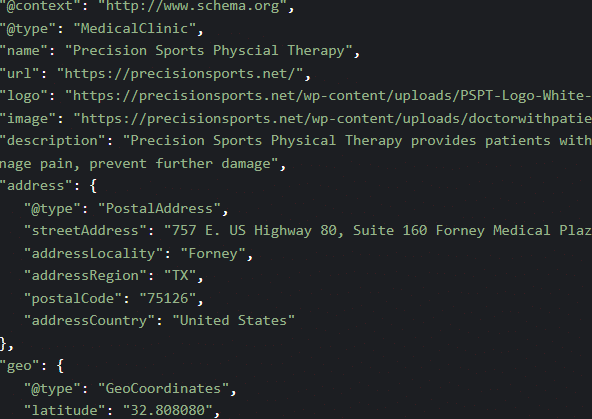



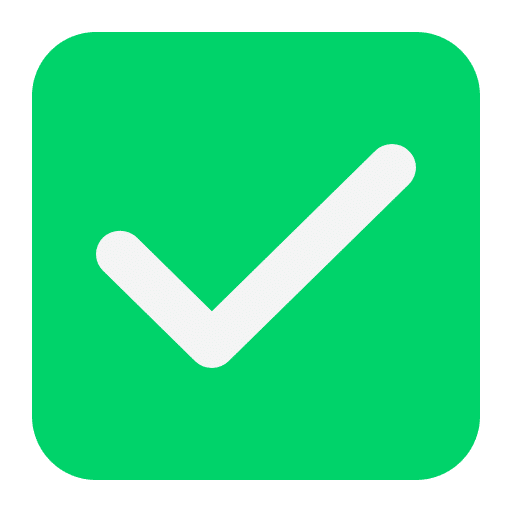
Don't just tell a writer a topic. Provide detailed content briefs that include keywords, target audience questions, and competitor benchmarks to ensure the final content is engineered for SEO success.
With a clear plan for what pages and topics we needed, the next step was content creation. Great SEO results demand great content, plain and simple. But instead of just handing a topic to a writer and hoping for the best, we created detailed content briefs for each important page and blog post before a single word was written.
Each content brief is like a roadmap for the writer, and for Eric’s project they included:
By creating these content briefs for each page (from the Home page to each service page to a chunk of planned blog posts), we ensured that when our writer sat down to craft the content, they were set up for success. They could focus on writing engaging copy, confident that the SEO strategy was baked in.
Eric also provided valuable input here. For instance, in the content brief for a Sports Performance Training page, he told us the key points he communicates to clients about that service – we made sure those points were emphasized in the brief. This way, the resulting content would reflect his unique approach and expertise, not just generic info.
The briefs were reviewed and approved internally (and in many cases, we also ran them by Eric to ensure we weren’t missing any crucial clinical info). Now it was time to actually produce the high-quality content that would fill out this website.
With detailed briefs in hand, our copywriter (an experienced writer well-versed in healthcare and SEO content) got to work. Writing for a physical therapy clinic requires a delicate balance: you need to sound authoritative and knowledgeable (to gain trust and rank well), but also approachable and empathetic (to connect with people who are likely in pain and seeking help). We kept this in mind through every paragraph.
The writing process went through several phases:
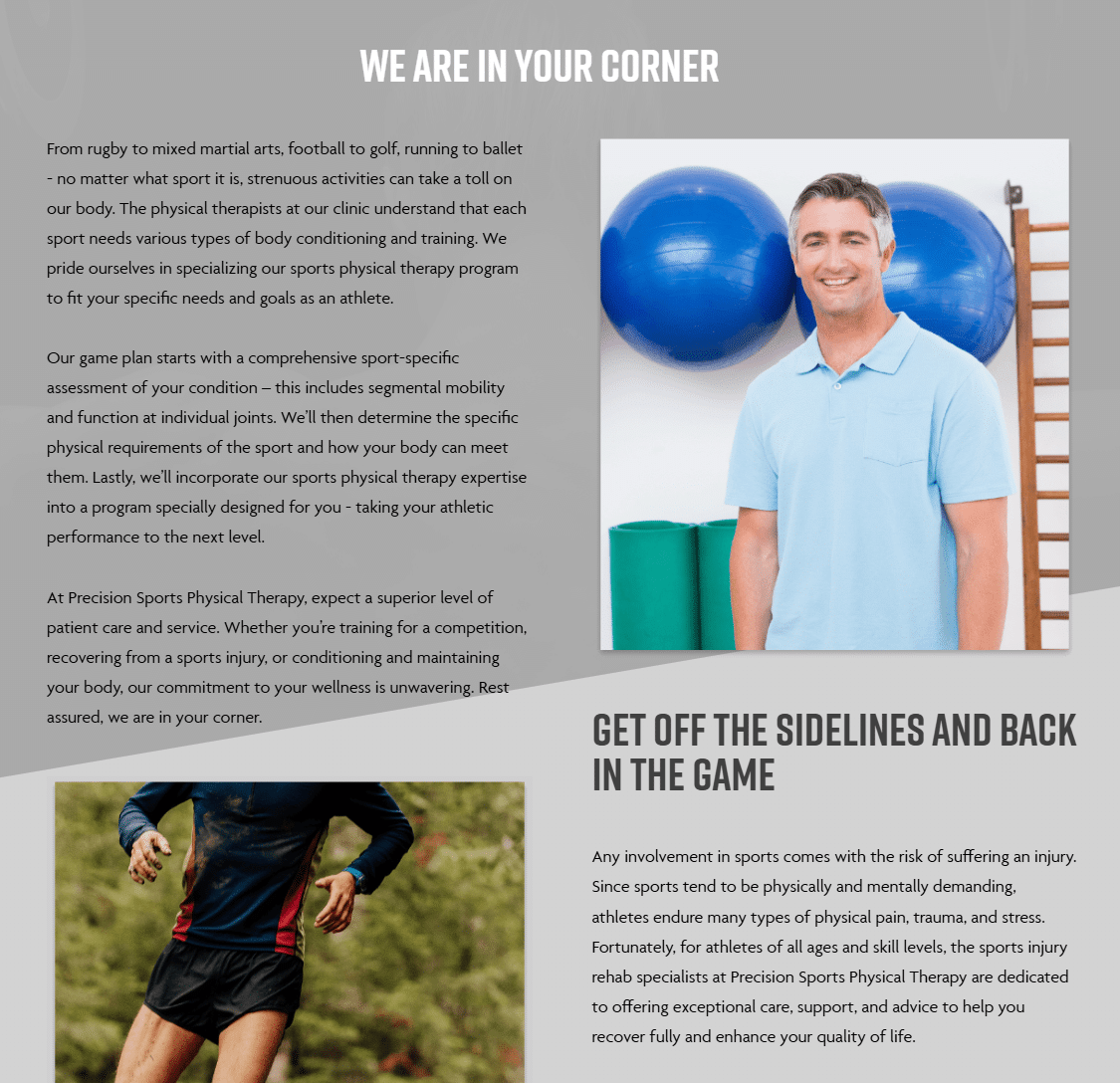



After a couple rounds of revisions, we had content that we were proud of. Each page was robust and outshined what competitors had online. For example, one competitor’s “Back Pain” page might just say “we treat back pain with therapy modalities X, Y, Z.” Eric’s Back Pain Therapy page, in contrast, discussed the different causes of back pain, how an athlete’s needs might differ from a sedentary person’s, success stories of past patients, and a gentle nudge to come in for an evaluation. It was the kind of page Google loves (rich in info) and patients love (it answers their questions and builds trust).
With copywriting done, we were ready to actually put this content onto the site with a beautiful design.
Write for humans first, then optimize for search engines. Your content should be authoritative, empathetic, easy to read, and built to convert.
Our design team had actually started working in parallel as the content was being written. By now, we had wireframes and mockups for the new site’s look and feel. We tailored the design to reflect Eric’s brand and to appeal to his target audience (athletes and active folks in the Dallas area).
Key design considerations and features:
Great design isn't just about looking good; it's about converting visitors into patients. Prioritize a mobile-first experience, clear calls-to-action, and trust-building elements.
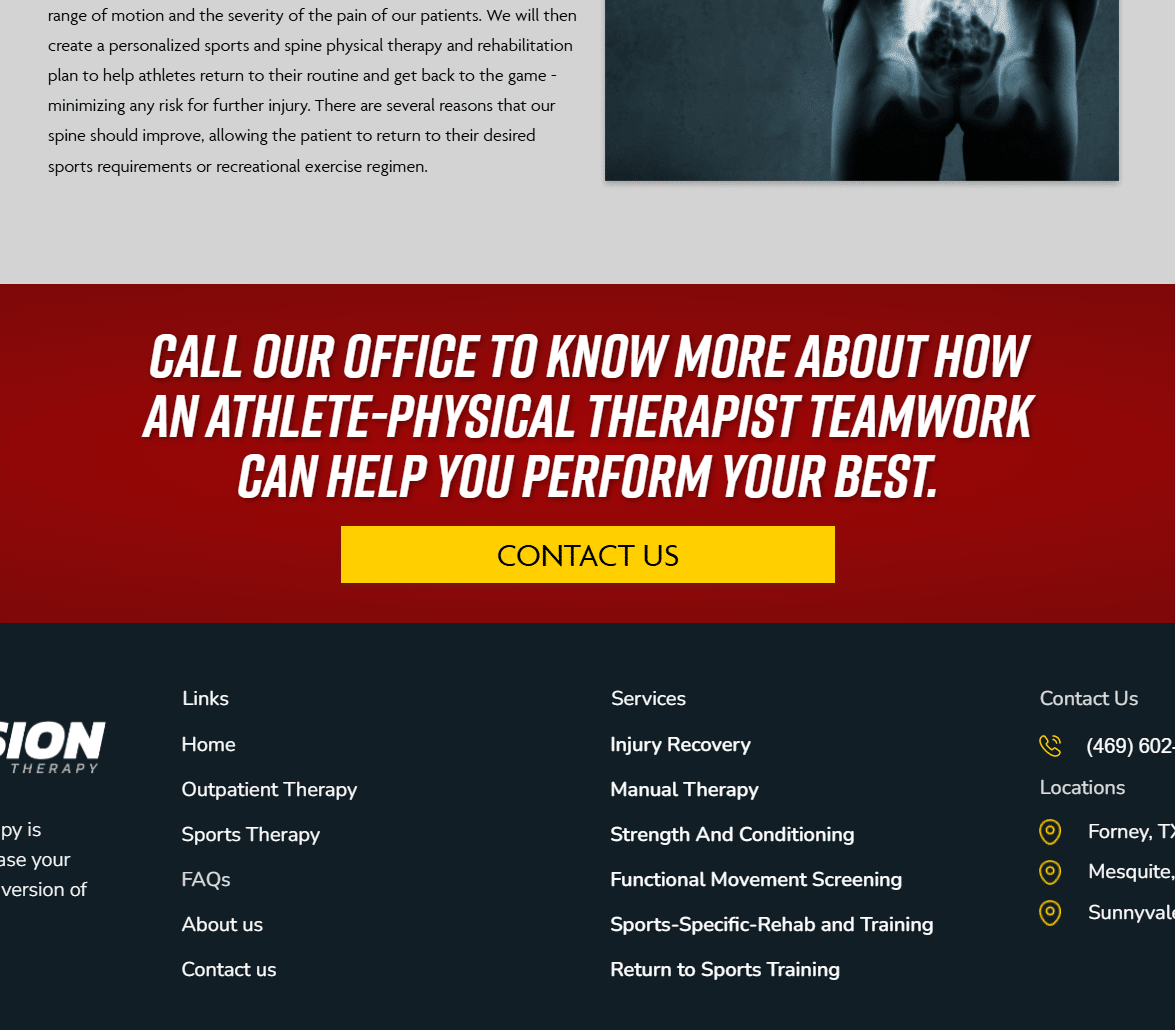
After iterative reviews and a thumbs-up from Eric (who was thrilled to see his vision coming to life visually), we moved into the development stage to turn these designs into a live, functional site.
(One small note: during this design phase, we kept the temporary one-page site running so that Eric’s web presence was uninterrupted. We developed the new site on a staging server, which is a private environment, so we could build and test everything without taking down the old page until launch.)
Our web development team took the approved designs and got to coding. We typically use WordPress for sites like this (with a custom or well-supported theme) because it’s flexible, and great for SEO. For Eric’s site, we built it with the following technical priorities in mind:
Finally, launch day came. We replaced the single page site with the shiny new multi-page website. Because of all the groundwork and tracking set up, this was a smooth transition. The site went live, and within a day or two, Google had indexed many of the new pages (we sped this up by submitting the sitemap in Search Console). The site was live, but our job was far from over – now we had to fill it with even more useful content and keep optimizing.

Finally, launch day came. We replaced the single page site with the shiny new multi-page website. Because of all the groundwork and tracking set up, this was a smooth transition. The site went live, and within a day or two, Google had indexed many of the new pages (we sped this up by submitting the sitemap in Search Console). The site was live, but our job was far from over – now we had to fill it with even more useful content and keep optimizing.
Technical SEO is non-negotiable. Your site must be fast, mobile-friendly, and built on a solid technical foundation to have any chance of ranking well.

Launching the core site pages was like fielding a solid starting lineup. But to truly dominate in the SEO game, we needed a strong bench as well – in this case, an active blog/content hub that would continuously draw in more visitors. We had planned for this in our initial strategy, and now it was time to execute.
Using our keyword research, we identified a list of blog topics that would attract our target audience (athletes and people with sports injuries) and demonstrate Eric’s expertise. These were topics highly relevant to the services but often more informational in nature – perfect for blog posts. For example:
A blog isn't just for news. Use it strategically to answer your audience's questions, attract long-tail keyword traffic, and establish your clinic as the go-to authority in your area.
We prioritized topics that had a decent search volume and low-to-medium competition. Many of these were questions or long-tail searches that our main service pages wouldn’t cover in depth. By answering those through blog articles, we could capture people earlier in the research phase – folks who might not yet be looking for a clinic, but who have a problem we can eventually help solve. If they found our blog post helpful, guess who they might call when they decide they do need an appointment? Yep, Eric’s clinic.
We set a blog posting schedule that was manageable. Quality trumps quantity, but consistency matters too. We aimed for roughly 2 long-form blog posts per month. This cadence was enough to show Google that the site is being updated frequently (good for SEO) and also allowed us to cover a wide range of topics over the course of a year.
For each blog post, we followed a similar process as with the main pages: we created a brief (though usually shorter than the service pages’ briefs) with the target keyword and outline. The posts were typically 800-1,500 words, depending on the topic. We included relevant images or infographics where possible (like an image showing a particular stretch, or a diagram of the knee for an ACL post – using proper image credits or creating our own visuals).
Every blog post, of course, had a call-to-action at the end. Something like: “If you’re dealing with [the issue discussed] and want professional help to get back to 100%, contact Precision Sports Physical Therapy for a free consultation. We’re here to help you get back in the game.” We considered the blog a funnel – many readers might come for information, but we wanted to convert as many as possible into leads over time.
Over the 12 months, as these posts rolled out, we saw the organic keyword footprint of the site expand dramatically. Initially, our site might only rank for those ~125 core keywords we targeted. But by the end of the year, we were ranking for hundreds of keywords – including lots of niche questions and long phrases that the blog covered. This brought in additional traffic.
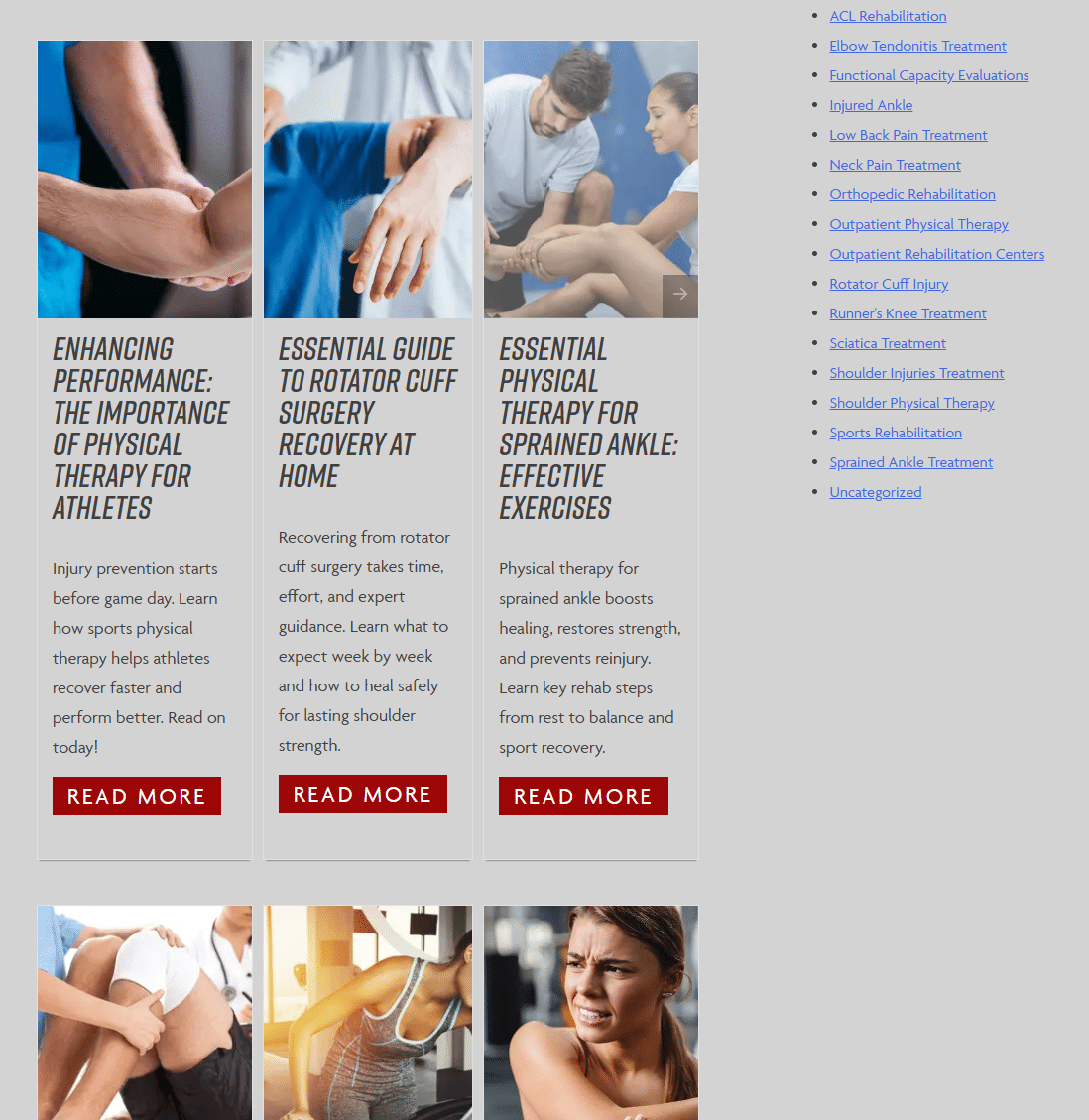
Maybe someone in another state even found a blog post – they might not become a patient, but if they left a comment or shared the post, it still helped overall engagement and reach.
The blog also served as fodder for link building: some of the guest posts we did externally could naturally link to a blog article as a reference (when appropriate) instead of always linking to a service page. That’s a more organic way to build links. And sometimes, other websites on their own would link to Eric’s blog posts as a resource (this is the holy grail of SEO – when you earn links naturally because your content is awesome).
In summary, the blog content strategy took the site from a static “online brochure” to a living, breathing resource center for sports injury and rehab info. It positioned Eric’s clinic not just as a service provider, but as an authority in the field of sports medicine/therapy, which pays dividends in both SEO and brand reputation.
Once the full site and blog were in motion, our work shifted into a new gear: monitoring performance and continuously optimizing. SEO is not a set-it-and-forget-it deal, especially in the first year of a new site. We kept a very close watch through Google Search Console (GSC) and Google Analytics to track our progress and spot opportunities or issues.
Here’s how we utilized these tools (and corresponding actions we took):
One specific adjustment we made around month 9: We realized our Sports Physical Therapy Training page wasn’t ranking as well as some others. GSC showed low impressions. We surmised that maybe not enough people search for that term, or perhaps we hadn’t built enough internal links to it. So, we wrote a couple of blog posts that tangentially related to sports performance (e.g., “Top 5 Agility Drills to Improve Athletic Performance”) and within those posts, we linked to the Sports Physical Therapy Training page. We also added a testimonial snippet on that page from a client who improved their vertical jump with Eric’s help. These tweaks gave the page more relevance and authority, and sure enough, its rankings improved a bit for related queries.
By the end of the 12 months, this cycle of monitor, learn, and optimize had become routine. It’s like coaching a team through a season: you watch the game footage (analytics), see what’s working or not, and adjust your playbook for the next game.
All of these efforts compounded. No single thing was a silver bullet – it was the combination of technical SEO, on-page content, backlinks, local SEO, and constant refinement that led to the results we achieved.
One specific adjustment we made around month 9: We realized our Sports Physical Therapy Training page wasn’t ranking as well as some others. GSC showed low impressions. We surmised that maybe not enough people search for that term, or perhaps we hadn’t built enough internal links to it. So, we wrote a couple of blog posts that tangentially related to sports performance (e.g., “Top 5 Agility Drills to Improve Athletic Performance”) and within those posts, we linked to the Sports Physical Therapy Training page. We also added a testimonial snippet on that page from a client who improved their vertical jump with Eric’s help. These tweaks gave the page more relevance and authority, and sure enough, its rankings improved a bit for related queries.
By the end of the 12 months, this cycle of monitor, learn, and optimize had become routine. It’s like coaching a team through a season: you watch the game footage (analytics), see what’s working or not, and adjust your playbook for the next game.
All of these efforts compounded. No single thing was a silver bullet – it was the combination of technical SEO, on-page content, backlinks, local SEO, and constant refinement that led to the results we achieved.
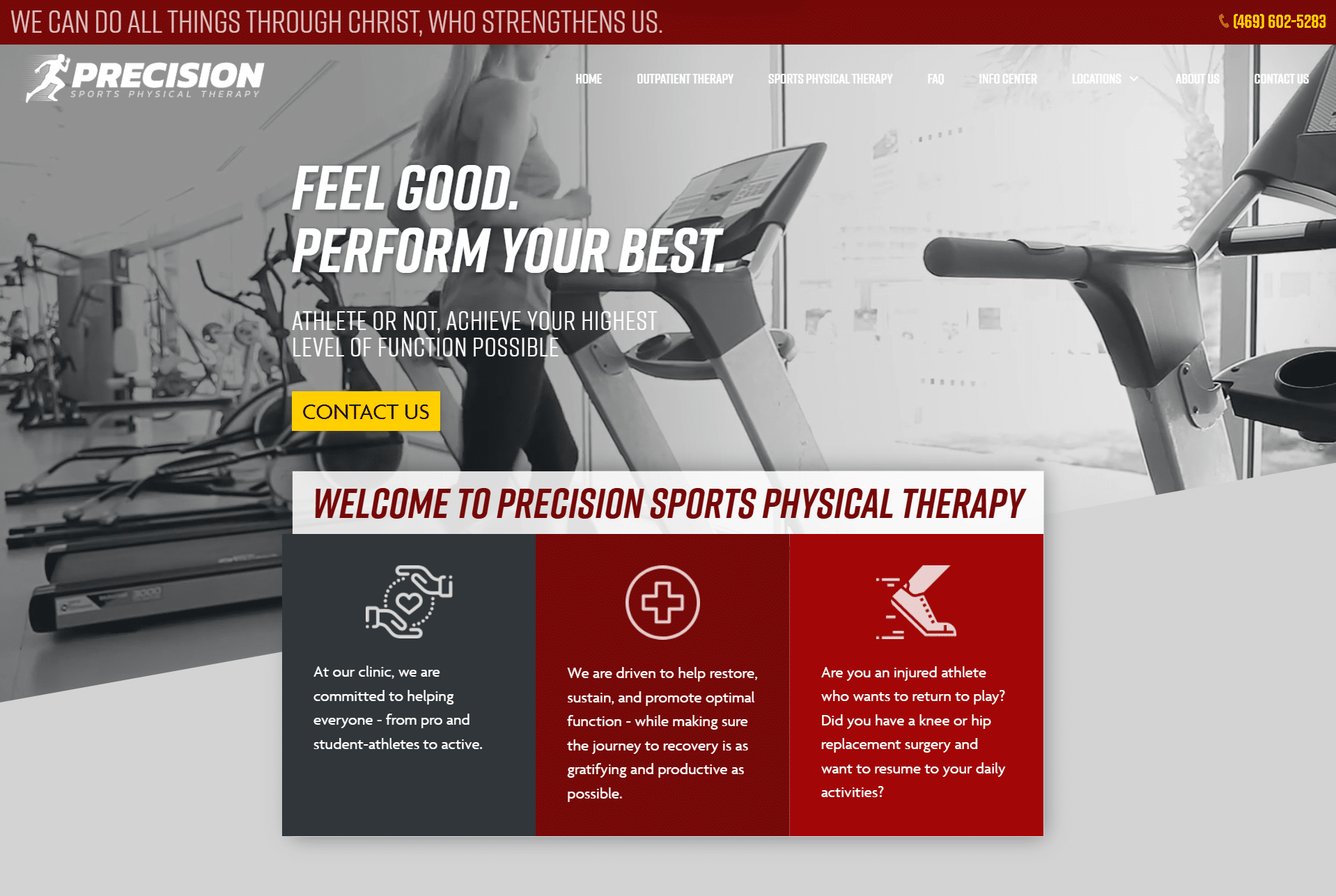
SEO is a process of continuous improvement. Regularly monitor your performance in Google Search Console, identify opportunities, and refine your strategy based on real-world data.
Ranking on Google for over 380 relevant keyword phrases.
Highly qualified, local traffic visiting the website every month.
Skyrocketed from 12 to 57 in just one year, excluding short calls.
More than doubled the aggressive SBA loan projections in the first 12 months.
Search Engine Dominance: Precision Sports Physical Therapy’s website was now ranking for over 380 keyword phrases on Google. It was hard to search for anything related to sports injuries or rehab in his area without seeing Eric’s clinic pop up. From broad terms like “sports physical therapy Dallas” to ultra-specific queries like “rehab for soccer ACL injury near me,” his site was showing up on page 1 for countless relevant searches. We had effectively made Eric the online authority for sports injury rehab in his market.
Traffic Explosion: Those keyword rankings translated into a flood of potential patients visiting the website. We were seeing over 320 organic visitors per month (up from essentially zero a year prior). And this wasn’t just any traffic – these were highly qualified, local visitors looking for exactly the services Eric offers. To put it in perspective, if Eric wanted to get that kind of targeted traffic via Google Ads, he’d likely have to spend $2,500+ per month in advertising. Instead, through SEO, his site was attracting that traffic organically, month after month, without paying Google for each click.
This kind of upward trajectory in organic traffic meant that instead of pouring money into ads, Eric was reaping the rewards of free visibility on search engines. More visitors searching for sports rehab meant more opportunities to convert them into actual patients. And the growth wasn’t slowing down – each month, the traffic numbers were higher than the last as our SEO flywheel kept gaining momentum.
Phone Ringing Off the Hook: Most importantly, all that traffic turned into tangible business. In just one year, Eric watched his qualified monthly phone calls skyrocket—from a quiet 12 in January to 57 by December—and that’s after we intentionally filtered out the noise. Using CallRail, we excluded every call that lasted under 30 seconds (about 32 % of the total), because those brief rings rarely turn into real patients. What remained were solid, intent‑driven inquiries, and they poured in day after day: “I found you on Google…” “I just read your article on rotator‑cuff injuries…”. His online form submissions surged in tandem. Before long, Eric’s once‑open calendar was booked solid, with a waitlist for premium slots. He had to hire an assistant—and then more staff—just to keep pace. This is the momentum clinic owners dream about: a flood of genuine, ready‑to‑schedule patients powered by smart SEO.
Revenue Doubled Initial Projections (and Then Some): The ultimate proof is in the bottom line. By the end of that first year, Eric’s clinic revenue had more than doubled compared to what he had projected with the SBA based on a slow start. In fact, it blew past his break-even point and kept climbing. He was able to comfortably cover all his loans and expenses and then reinvest in the business – buying new therapy equipment, bringing on a part-time trainer, and improving the clinic space – all things that further set him apart from competitors.
Expansion and Growth: The success didn’t stop at one location. By 2024, just five years after launching, Eric’s business had grown to the point that he needed six full-time licensed therapists on staff. Seeing this growth, he seized an opportunity to open a second location in the Dallas area. (Google had him go through that newer video verification process for this second clinic – which we helped him with – and soon we had two Google Business Profiles driving leads.) The second location benefitted from the reputation and online presence we’d built; patients were already willing to drive from across the metro area, so having multiple offices made it even easier to accommodate demand. It’s a testament to how robust the growth was – going from zero to two thriving clinics in such a short time is almost unheard of in healthcare.
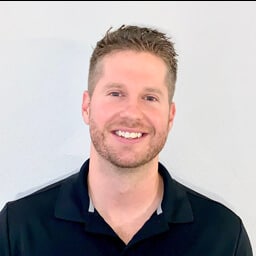
"He joked that he 'had created a monster' – in a good way. He became the go-to sports PT for local athletes, got mentions in local media, and built a referral network with orthopedic doctors who kept seeing his clinic name pop up online."
Perhaps one of the most gratifying outcomes was hearing Eric’s feedback. He told us that initially he wasn’t sure if his dream would pan out – there were moments early on, before the SEO kicked in, when he worried if he’d made a huge mistake uprooting his family. But once the machine revved up, he joked that he “had created a monster” – in a good way. He became the go-to sports PT for local athletes, got mentions in local media (some reporters found him online when looking for an expert to comment on sports injuries), and built a referral network with orthopedic doctors who kept seeing his clinic name pop up online.
It’s important to highlight: these results, while fantastic, weren’t magic. They were the product of a clear, well-executed strategy. Eric’s success confirmed what we firmly believe: If you systematically check all the right boxes – from deep keyword research and competitor intel, to technically sound website development, to outstanding content creation, to aggressive but smart link building, and continuous optimization – you can dramatically change a business’s trajectory in a year. Eric put in the work on his end (delivering great service to patients, which in turn led to great reviews and word of mouth). We put in the work on the SEO and digital marketing end. And together, that combination was unstoppable.
As you can see, a well-executed SEO blueprint can lead to dramatic growth in website traffic – and more importantly, a steady flow of new patients. Reading about Eric’s journey, you might be thinking, “This sounds amazing, but can I really do all that?” It’s normal to feel a bit overwhelmed. Eric’s success came from a lot of moving parts working together, and if you’re busy running a clinic, tackling website engineering plans and keyword analysis might be the last thing you have time for.
That’s exactly why we’re here to help you. We don’t just want to give you a blueprint in theory – we’d like to give you actionable insight into your own online presence. The best way to start? Claim your Free Website Evaluation. This is a no-obligation, in-depth look at how your clinic appears on the web today, and what can be improved to start bringing in results like we achieved for Eric.
Think of this evaluation as getting a free coaching session for your business’s online game. Whether you decide to implement the suggestions yourself, or you’d like our team of experts to assist you, you’ll come away with clarity on how to move forward.
Remember, just 12 months before achieving his dream (a thriving, profitable physical therapy clinic), Eric was in the same position you might be in now – uncertain how to get more patients in the door. The difference is that he took action and followed a proven process. You can do it too. You’ve seen through this story what a dedicated SEO and web strategy can achieve for a clinic like yours. The next step is up to you.
Ready to fill your schedule with new patients and take your practice to the next level? Get your free website evaluation today. Let’s uncover your clinic’s potential and chart a path to doubling your revenue in the next 12 months. Who knows – a year from now, we might be writing your success story here!
Absolutely. While this case study was in Dallas, the core principles of targeting niche keywords, creating valuable content, and building online authority are adaptable to any location or physical therapy specialty. We always tailor the strategy to your unique market and ideal patients, just as we did for Eric.
While achieving results like doubling revenue took 12 months, you will see progress much sooner. Many of our clients see an increase in local search visibility and phone calls within the first few months as foundational elements like the Google Business Profile and initial content take effect. Marketing is a compounding effort—it builds momentum over time.
Minimal. We know you are busy treating patients. We handle the heavy lifting, from keyword research to content creation and web development. We will need your expert clinical insights during the process, just as Eric provided, to ensure all content is accurate and reflects your unique approach, but we act as your outsourced marketing department so you can focus on what you do best.
While results vary based on market conditions, competition, and execution, the strategies we used with Eric have proven successful across multiple physical therapy clinics. The key is following the process systematically and being patient enough to see it through.